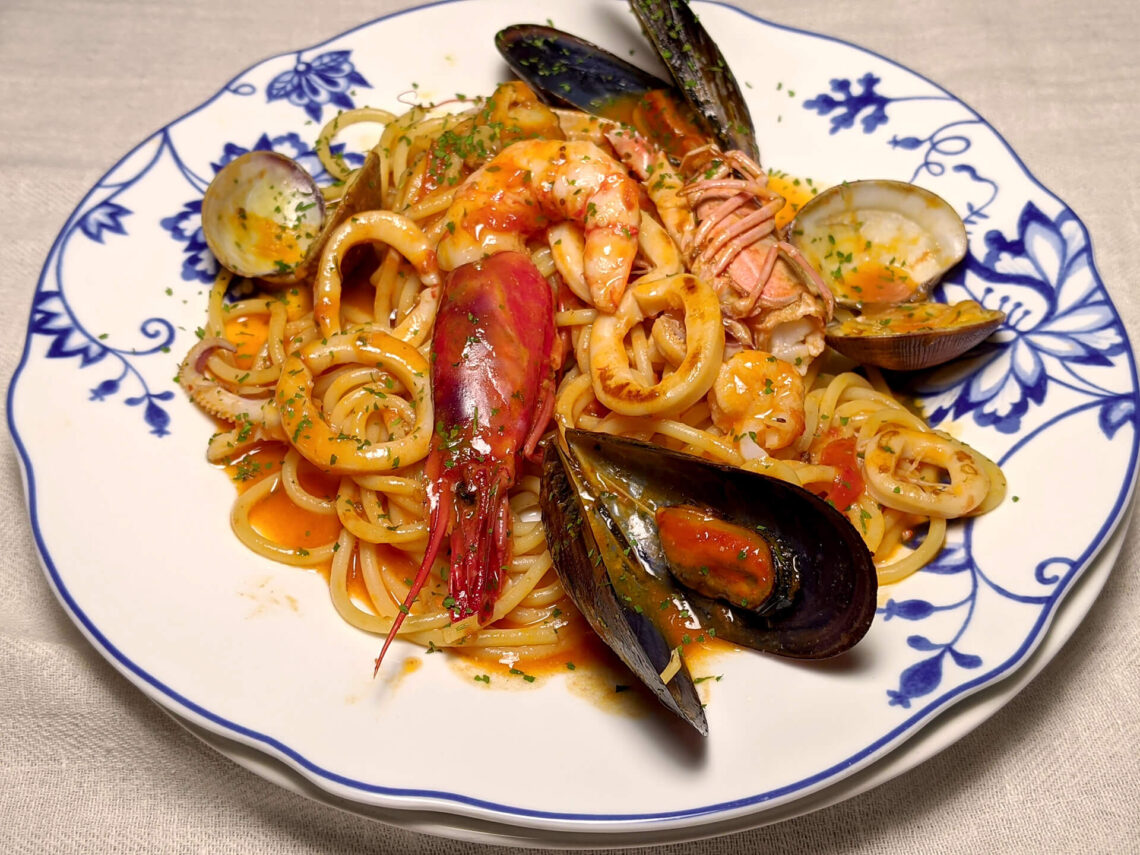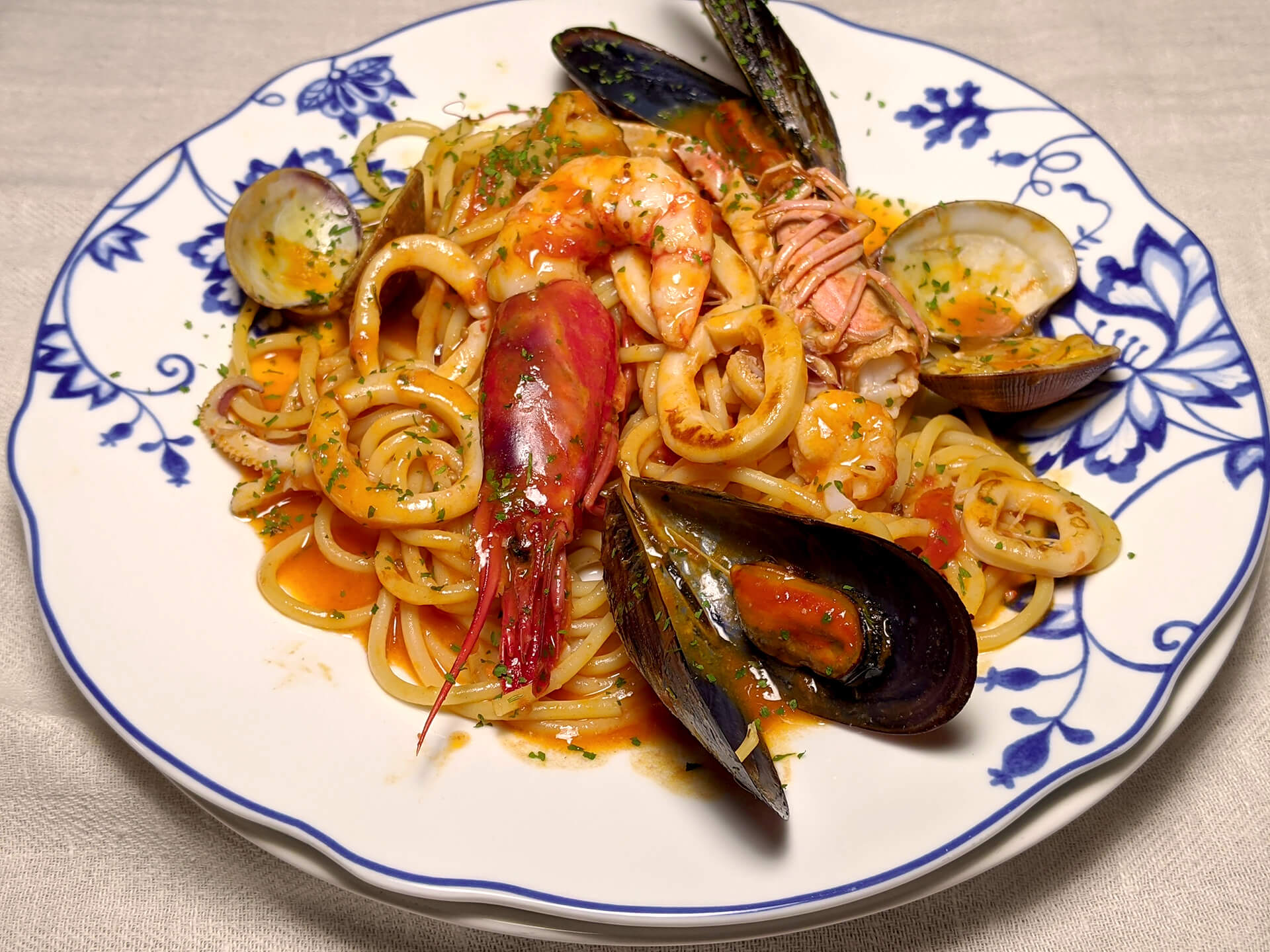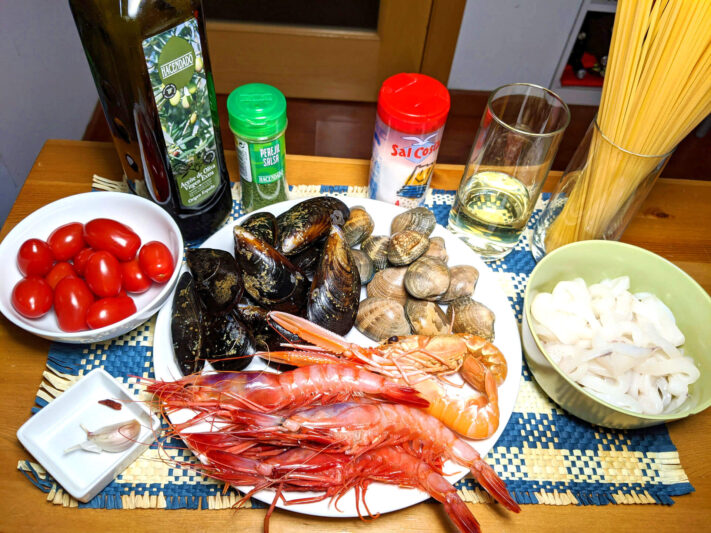
Pasta a la marinera, in this case, spaghetti. A simple recipe, but with more steps to follow than the ones I usually post. However, I assure you that taking a little longer to execute it has its reward: It is one of the queen pastas, a festival for fish lovers, in short, I am already salivating remembering how delicious it always turns out.
First of all, the name of the recipe. In Italy there are three fish pasta recipes with more or less the same ingredients, but different names: Allo scoglio, alla pescatora, la marinara. It is a bit of a mess, because it is as if there is no consensus around which is which, what fish can/must each one carry, but what is clear is that, if it is allo scoglio, it must necessarily contain clams and mussels. So, in Italian I am very clear that I am talking about pasta allo scoglio, but in Spanish, to simplify and not confuse you, I have put a la marinera, so that it is better understood what it is about.
The type of pasta with which it is prepared is spaghetti or linguine, but in some areas they use paccheri. In our favorite restaurant in the neighborhood where we lived in Rome, “Mamma Angelina”, they prepare it precisely with Paccheri and every time I return to Rome, on the way I already dream of a whole plate, because they prepare it wonderfully.
As I have already told you, it is not a difficult recipe, it only involves following quite a few steps and, being very clear at all times that we do not want to mistreat the fish, that we must control the cooking time of each element so as not to end up with dry prawns or rubbery clams. Some simplify the recipe a bit, perhaps they are not so demanding with what they expect from the fish or, like some people I know and love, but I find it hard to understand, they are lovers of dry fish. What can we do, but if you like everything at its point, follow my advice.
Enjoy your meal!




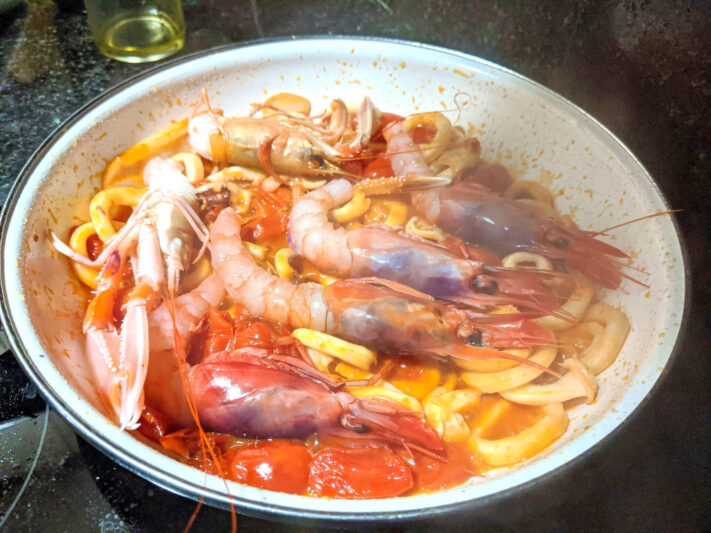



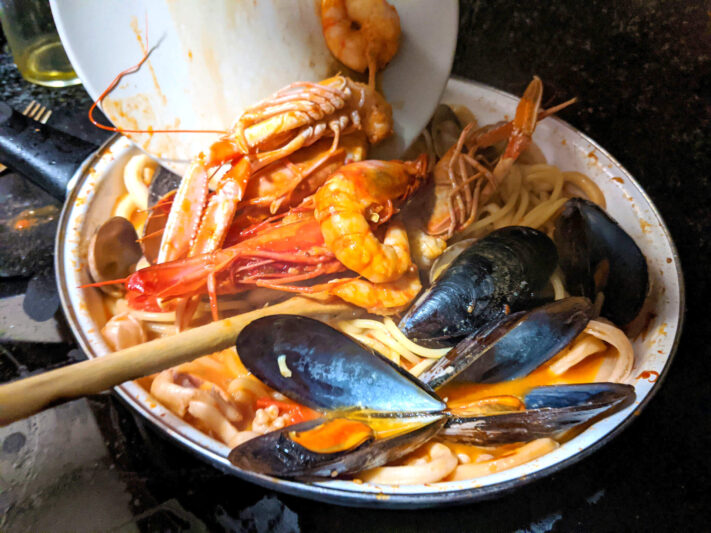
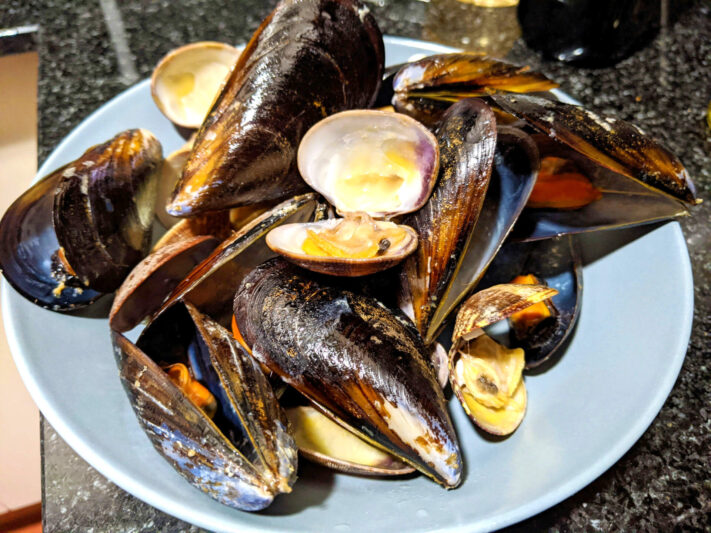


Pasta a la Marinera (Allo Scoglio)
Ingredients
- 160 g spaghetti
- 12 plump mussels
- 12 clams
- 2 Norway lobsters
- 4 prawns
- 1 large squid or 2 small ones
- 12 pear cherry tomatoes
- 1 splash of dry white wine
- 1 garlic clove
- 1 small cayenne pepper optional
- Chopped parsley
- Olive oil
- Salt
Instructions
- Soak the clams in salted water for an hour to release sand, (if they have any.)
- Clean the mussels well, removing the clumps and beards with a sharp short knife.
- Cut the squid into rings, if the fishmonger has not already done it for you.
- Cut the whiskers of the prawns, remove the shell and intestine with a toothpick. Gently, the body must remain attached to the head.
- Cut the shell of the Norway lobsters on the abdomen, and remove the shell and intestine with a toothpick. Also gently, so as not to separate the body from the head.
- Heat a paella pan with a splash of oil. When it is hot, add the clams and mussels and cover. When they are open, immediately remove them from the paella pan. If any have not opened, throw them in the trash.
- Reserve the liquid released by the clams and mussels.
- In a paella pan that can hold all the ingredients of the recipe, fry a garlic clove cut in half.
- Remove the garlic when it is golden and add the squid.
- You can already put the pot of water for cooking the pasta to boil.
- After 5 minutes, add a splash of dry white wine.
- Once the alcohol has evaporated, when it no longer smells of alcohol, add the tomatoes and cayenne pepper, if you want it to have a slightly spicy touch.
- After 3-4 minutes, add the prawns and Norway lobsters to the paella pan.
- When they are almost done, barely changed color, remove the prawns and Norway lobsters from the paella pan and reserve them.
- Add the almost al dente pasta to the paella pan and the juice of the clams and mussels. Sauté everything together. If the juice is not enough to hydrate the pasta until it is al dente or it dries too much, add half a ladle of cooking water.
- Add the clams, mussels, prawns, and Norway lobsters, stir for 30 seconds, and serve, with a little chopped parsley on top.

